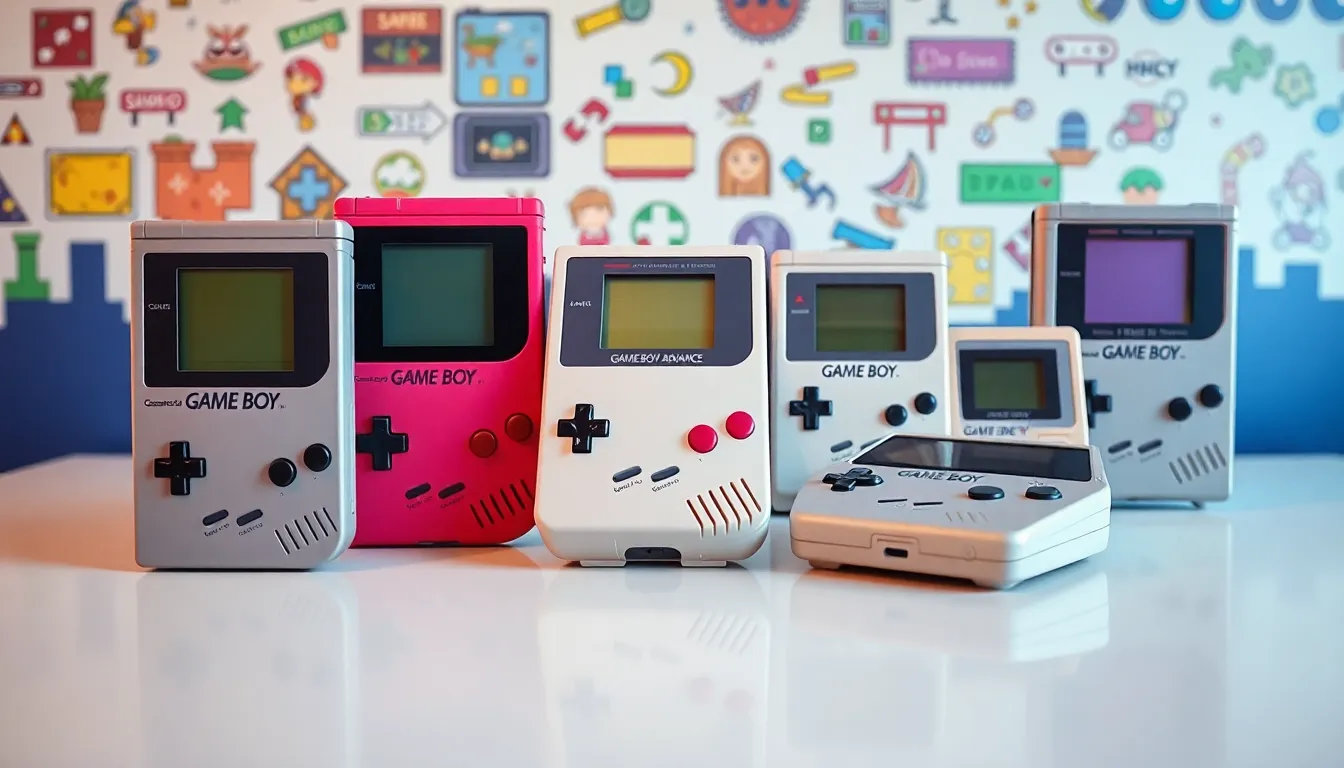Table of Contents
ToggleAh, the Game Boy, a beloved handheld gaming marvel that revolutionized how people played games on the go. Who could forget the satisfying click of the buttons and the joy of blasting through level after level while waiting for a bus or pretending to pay attention in class? Whether you’re a nostalgic gamer or new to the scene, this guide to Game Boy models is like opening a treasure chest packed with pixelated joy. Let’s embark on this retro journey through the colorful spectrum of Game Boy devices, where gaming history and nostalgia collide.
The Original Game Boy

Launched in 1989, the original Game Boy was nothing short of a cultural phenomenon. Its gray exterior and iconic design set the stage for handheld gaming as we know it. This brick of nostalgia featured an 8-bit processor and a 2.6-inch monochrome screen that might seem archaic today. Yet, this device was revolutionary, boasting titles like “Tetris” and “Super Mario Land.” The battery life was impressive, lasting up to 30 hours on just four AA batteries, an impressive feat that allowed gamers to lose themselves in worlds of adventure for days on end. Its simple yet effective controls made it user-friendly, appealing to both seasoned gamers and newcomers alike.
Game Boy Color
Entering the scene in 1998, the Game Boy Color turned the monochrome world of its predecessor upside down. Sporting a vibrant color screen, it was the first major update that allowed the use of color in its games, finally. Titles like “The Legend of Zelda: Link’s Awakening DX” delighted players with their visual flair. The GB Color retained compatibility with original Game Boy games, making it a must-have upgrade for many. It was compact, lightweight, and packed a punch with its 32-bit processor. The joy of playing something like “Pokémon Gold and Silver” on a color screen was instantly captivating, making it an essential piece in every gamer’s collection.
Game Boy Advance and Game Boy Advance SP
Fast forward to 2001, and the Game Boy Advance stepped into the limelight, introducing a new era of gaming. With its sleek design and an improved screen that supported 240×160 pixels, it felt like a whole new world. The GBA embraced the spirit of stronger titles with games like “Metroid Fusion” and “Advance Wars.” Then, in 2003, the Game Boy Advance SP made even bolder strides. It featured a clamshell design that protected the screen, brought back a front-lit display, and changed the face of portability, literally. This model reigned supreme, offering an impressive library of games and continued the legacy of its forebears while charming collectors with its innovative outlook.
Game Boy Micro
The Game Boy Micro hit stores in 2005 and took ‘portable’ to new extremes. With dimensions not much larger than a cell phone, this little marvel weighed just 2.8 ounces. Sporting a stylish design and a backlit screen, it offered enhanced graphics and a great gaming experience. But, its small size also came with a catch, it was not compatible with Game Boy or Game Boy Color games, focusing solely on the GBA library. This model garnered a fashion-forward reputation, appealing to mobile gamers who desired both functionality and style. Talk about gaming on the go. The Game Boy Micro may have been less successful compared to other models, but it certainly made a lasting impression.
Limited Editions and Special Releases
Limited editions and special releases have always captivated fans. From the Pikachu edition console to the beautiful gold variant released for “The Legend of Zelda: Ocarina of Time,” these models often serve as collector’s items that value high on the market. Sometimes offering unique game bundles, these special editions tapped into the passions of discerning fans. The Game Boy Advance SP also had its share of special designs, including one adorned with the amazing artwork of “Final Fantasy.” These unique designs are treasured not just for their aesthetic appeal but also for the nostalgia they evoke, adding layer upon layer to the legacy of the Game Boy.
The Evolution of Game Boy Technology
Throughout its existence, the Game Boy evolved significantly, from the rudimentary graphics of the original model to the enhanced capabilities of the Game Boy Advance series. Technological advancements such as improved processors, better displays, and longer battery life greatly influenced the gaming experience. Each new model not only offered better graphics but also expanded the gaming possibilities, think multiplayer options and connectivity with titles like “The Legend of Zelda: Four Swords.” The core idea of seamless portability, but, remained constant, becoming a staple for mobile gamers.
Legacy and Impact on Gaming Culture
The Game Boy models have left an indelible mark on gaming culture. They introduced portable gaming to the masses and paved the way for mobile gaming as we know it today. Franchises like Pokémon owe much of their success to the Game Boy, as it allowed players to bond, trade Pokémon, and embark on epic adventures. This innovation not only transcended age barriers but also laid the groundwork for modern gaming’s social elements. Events like the Game Boy’s 30th anniversary celebrate its lasting influence, even today, retro enthusiasts continue to seek out these classic devices. The echoes of the Game Boy can still be felt across the gaming landscape, inspiring developers and charming new generations.




